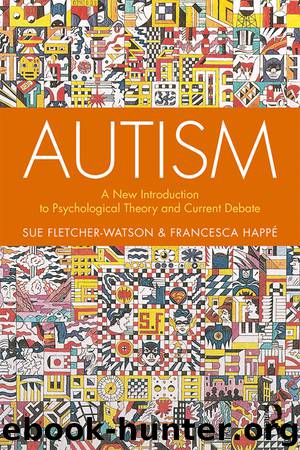Autism by Sue Fletcher-Watson

Author:Sue Fletcher-Watson
Language: eng
Format: epub
Publisher: Taylor and Francis
Published: 2019-06-28T00:00:00+00:00
6. The role of primary deficit models
Neither of the two models presented here has fully achieved what it set out to do – to provide a simple, cognitive-level explanation for a diversity of biological and behavioural features found in autism. Autistic performance on the various measures created to assess ToM in particular, but also executive function, remains complex. It has not yet been possible to disentangle the various ways in which an autistic person might address a ToM task. One of the reasons that data are lacking on this is that, since the introduction of the ToM model, the science has begun to focus on more nuanced, developmental theories of autism. While many of these have their roots in ToM, incorporating mentalising as part of an important array of social cognitive abilities, the focus on false belief in particular has lessened.
Despite the terminology of ‘deficit’ and the determination to encapsulate the variety of autistic experience in a single cognitive label, we must acknowledge the beneficial descendants of this body of work. Mentalising remains a useful shorthand for a non-autistic person encountering autism for the first time. Considering that someone else might not easily comprehend your intentions or beliefs (even though they are interested in and concerned for you) can help neurotypical people to adapt their behaviour in ways that autistic people may find useful – e.g. be more explicit about their thoughts and feelings, make their language more literal and precise.
A desire for parsimony – with authors postulating the minimum number of underlying psychological features necessary to account for a behavioural pattern – is prevalent throughout psychology. However, it may be more convincing in the case of autism to propose multiple primary differences, at the psychological level as at the genetic and behavioural levels (Happé et al., 2006). A co-occurrence of multiple differences, unconnected at the psychological level might be explained by the spatial proximity of their biological substrates in the brain or by a single but pervasive difference in brain function or connectivity. If this is the case, it may be futile to look for a single psychological marker of autism. The ‘fractionated triad’ account argues for different psychological factors impacting different aspects of the behavioural phenotype of autism, underpinned by largely independent genetic influences (Brunsdon & Happé, 2014).
Download
This site does not store any files on its server. We only index and link to content provided by other sites. Please contact the content providers to delete copyright contents if any and email us, we'll remove relevant links or contents immediately.
| Allergies | Asthma |
| Autism & Asperger's Syndrome | Cystic Fibrosis |
| Down Syndrome | Eating Disorders |
| Epilepsy | Learning Disorders |
| Lice | Special Needs Children |
I Capture the Castle by Dodie Smith(1983)
Aspergirls by Rudy Simone(1655)
Be Different by John Elder Robison(1600)
Autism's False Prophets by Paul A. Offit(1492)
My Child's Different by Elaine Halligan(1461)
Smart but Scattered—and Stalled by Richard Guare(1453)
101 Tips for the Parents of Boys with Autism by Ken Siri(1431)
What's Making Our Children Sick? by Michelle Perro(1384)
Asperger Syndrome (Autism Spectrum Disorder) and Long-Term Relationships by Ashley Stanford(1375)
ADHD by Mark Selikowitz(1353)
On Immunity: An Inoculation by Biss Eula(1338)
Girlish by Lara Lillibridge(1333)
Nerdy, Shy, and Socially Inappropriate by Cynthia Kim(1309)
An Adult with an Autism Diagnosis by Gillan Drew(1305)
Animal-assisted Interventions for Individuals with Autism by Temple Grandin(1283)
Sarah's Child (Hqn Romance) by Linda Howard(1267)
Seeing Ezra by Kerry Cohen(1263)
The Cities by K.A Knight(1233)
Why Gender Matters by Leonard Sax M.D. Ph.D(1219)
